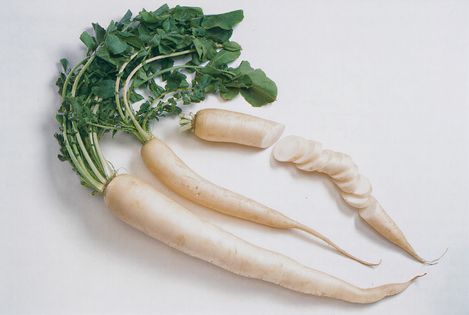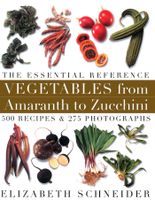Advertisement
Asian or Oriental Radish
Raphanus sativus, Longipinnatus Group

Appears in
Published 2001
Also
daikon (Japanese) ,mooli (Indian) ,moo or mu (Korean) ,lo bok (also lo pak) orluo boh (Chinese)
Throughout Asia, radishes are a serious staple, no mere nibble. In China, they are often cooked; in Korea, they are usually pickled. In Japan, they are enjoyed raw, cooked, and pickled—as they are in India, Thailand, Vietnam, the Philippines, and Malaysia, among other countries.
In the United States, Asian radishes are represented in greatest number by the long white daikon—and this Japanese generic name is the one used most often. Although the daikon weighs about 1 pound in our mainstream markets, it can reach 60 pounds and still be juicy and tasty. The Japanese do not limit their relishing of radishes to this white type; they have perfected a range of beautiful varieties, from torpedo- to turnip-shape. But for anyone who has not yet experimented with the full culinary range of radishes, the smoothly tapered daikon is a good place to begin. Flexible and forgiving, requiring little labor, and widely available, it yields gracefully to all stages of preparation, from raw through the softest long-cooking.


